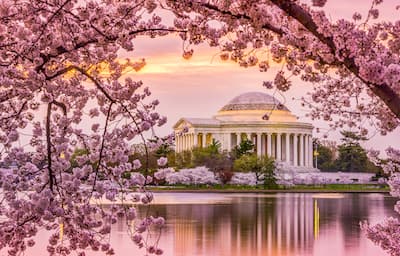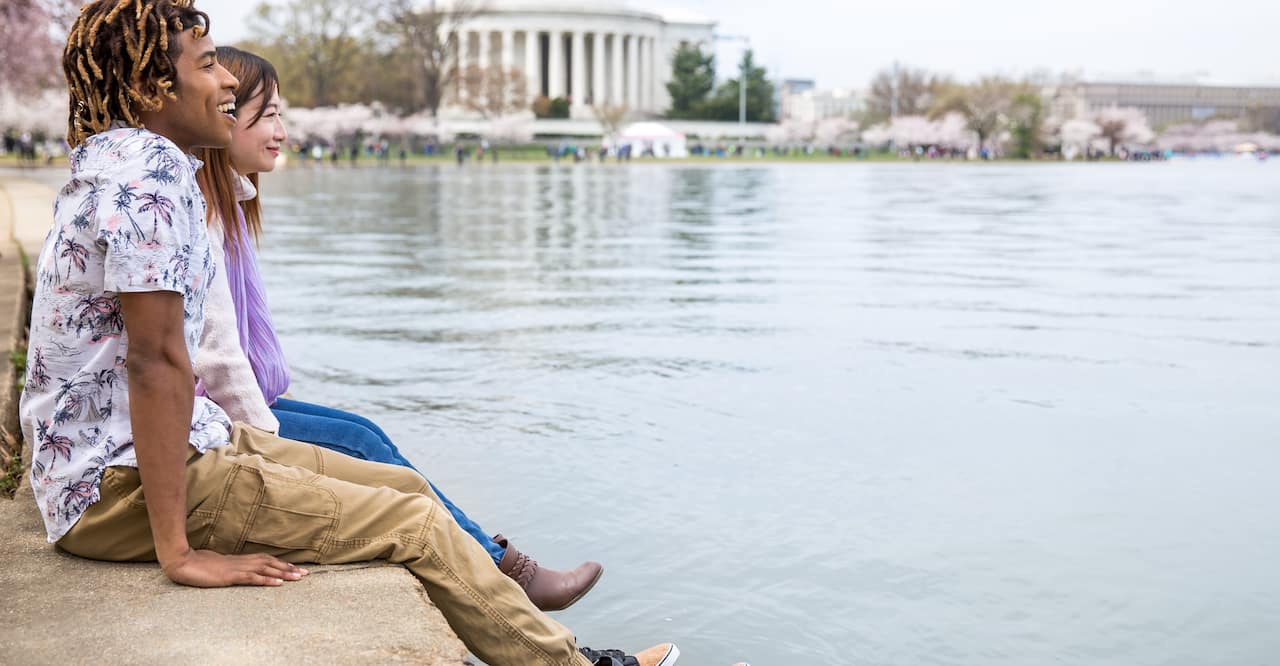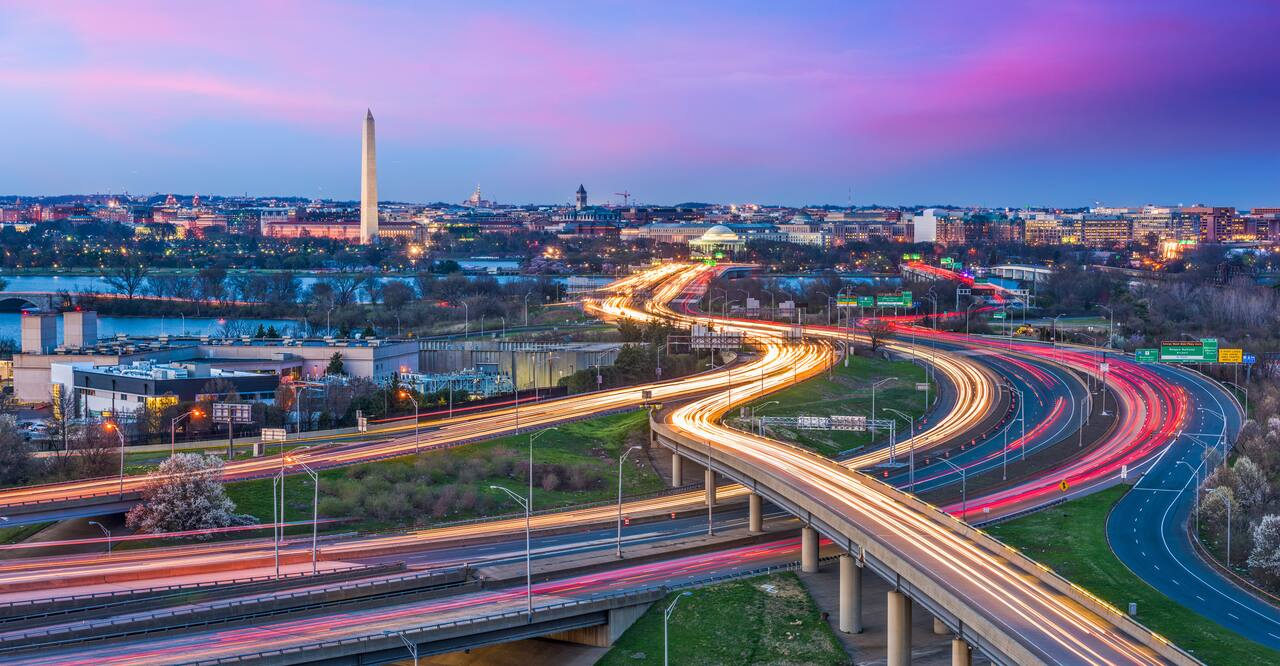
A Traveling Insider's Guide to Washington, D.C.
Allow us to help you navigate your Washington, D.C. vacation using this expert’s guide to the nation’s capital. | By Paul Oswell | January 21, 2022
As the capital of the United States, we’re all familiar with Washington, D.C. before we even go there. It’s the seat of the nation’s government and home to iconic monuments. It’s also a wonderful tourist destination, with 20 million visitors passing through every year.
The best thing about visiting D.C., though, is finding out that there’s so much more to enjoy beyond the images that we’ve seen in our history textbooks. Washington, D.C. is a city with hidden cultural depths, a world-class dining scene and a surprisingly diverse and dynamic ethnic diversity in and around its neighborhoods.
In our guide, we'll lobby for your attention with a full agenda of ways to spend your time here, and we're sure that we'll secure a mandate to make your trip to the nation's capital a memorable one:
Historical dates: See the heavyweights of the sightseeing world, such as the White House, the Capitol Building, the Lincoln Memorial and the National Mall.
City greats: There are beautiful spots to unwind or snap a photo, from the banks of the Potomac River to the art museums to the winding trails at the National Zoo.
Clean plates: The city's culinary scene is one of the most buzzing in the country, with a host of both Michelin-starred restaurants and beloved neighborhood spots.
Why should you visit Washington, D.C.?
The most compelling reason to visit the city is to see some of the world’s most famous sights in person. There’s something special about putting eyes on the White House, regarding the huge dome of The Capitol or walking by the majestic Supreme Court.
It’s hard not to feel humbled by the scale and historical weight of the Lincoln Memorial or the Martin Luther King, Jr. Memorial, or exhilarated while walking down the National Mall.
A city of such importance has some seriously impressive architecture, and even if you already know the history, the actual structures themselves really make an impression.
Visitors are never far from gardens, parks, flowers and water. These vary from the tranquil waters of the Tidal Basin to the sprawling National Arboretum to charming, curated gardens.
D.C. has a strong performing arts scene, with cultural venues such as the John F. Kennedy Center for the Performing Arts (known as the Kennedy Center) and Arena Stage hosting household-name performers. You can also find everything from hip jazz clubs, such as Blues Alley in Georgetown, to lively bars and karaoke around Penn Quarter.
Chances are you could dine next to a member of the political elite at one of the city’s world-class restaurants. The high-end waterfront dining rooms are packed with movers and shakers, and you can find Michelin-starred eateries throughout the city, like Tail Up Goat, Maydan and Kinship. Ethiopian cuisine is exceptionally popular in D.C., too, as the nation’s capital is home to the largest Ethiopian population in the country. Local favorites include CherCher, Ethiopic and Zenebech.
Washington, D.C. has an energy that’s unlike anywhere else in the country. Just by visiting and taking in the power-charged atmosphere as you walk around can make you feel plugged into something big. This is none more true than at the Washington Hilton, which enjoys a plum location close to Dupont Circle, and within walking distance of the National Mall and the White House.
The most famous sights are understandably very popular, and during peak seasons can get incredibly busy. The monuments are on display 24/7, and it’s fun to go at night when the crowds are thinner and the statues are all lit up. You can book an evening sightseeing tour, too. Most sightseeing tours, especially self-guided ones, entail a lot of walking, so comfortable shoes and refillable water bottles are essentials.
When is the best time for your trip to Washington, D.C.?
In general, the best months to visit Washington, D.C., are September to November and March to May. Autumn is a beautiful time in the city, with crisp sunny days and changing fall colors that contrast strikingly against the white marble backdrop. Spring also has its charms, especially with the cherry blossom season in late March and early April.
Summers are hot and humid, though. If you visit, then plan to spend your time in museums, enjoying the air conditioning as well as the exhibits. Winters are less severe than some East Coast cities, and the city tends to shut down if there’s snowfall.
On the East Coast?
Get tips from our guide to New York City or Boston.
Getting to and around Washington, D.C.
Three major airports serve Washington, D.C., with most international flights arriving at Dulles International Airport. Wiehle-Reston East is the nearest Metro station to Dulles, connected by the Washington Flyer Silver Line Express Bus. Travel time into the city center is just over an hour. A quicker option is the Super-Shuttle bus service, which runs every hour, but book in advance.
Reagan National Airport is the closest airport to the city and is served by the blue and yellow Metro lines, which get visitors downtown in around 20 minutes. Baltimore-Washington International Airport is a hub for low-cost international and domestic flights, but keep in mind that it’s a trek to get to and from here (Baltimore is about an hour northeast of the city by car). Amtrak trains run every hour (from 4 a.m. to 10 p.m.) from here to Union Station, and there’s the Maryland Rail Commuter (MARC) service from Union Station every hour (from 6 a.m. to 10:30 p.m. on weekdays).
The city is well served by Amtrak, and trains from many regional cities arrive at Union Station. Washington Metropolitan Area Transit Authority (WMATA, wmata.com) is the city’s main public transportation provider. For most of the city, MetroRail, the subway-surface rail system, is the best option. The Metro consists of six color-coded lines and runs from early morning to late night with daily variations. Trains run every 10 minutes or so. Tickets and multiple-day passes can be bought at Metro stations. MetroBuses also accept these passes and are good options for traveling to outlying neighborhoods. The DC Circulator bus service is a popular choice, linking most of the main sights; plus, it’s free!
Taxis and ride-share apps operate all over the city. You can also rent a car, but chances are you won’t need one to get around unless you’re planning an excursion outside of the city. The city has a good network of bike lanes and trails, and you can also rent a bike from Capital Bikeshare. D.C. is very walkable, with expansive green spaces, trails and sidewalks, so make sure to pack comfy shoes.
Paul Oswell is a British award-winning journalist and published travel author based in New Orleans, Louisiana in the United States. His books include Bucket List North America and The Great American Road Trip, as well as New Orleans' Historic Hotels. He has also been an editor of and contributor to several guide books/editions published by Dorling Kindersley (owned by Penguin), including New Orleans, Florida, Orlando, Los Angeles, California and The United States. His work has appeared in Conde Nast Traveler, Travel & Leisure (both of which he has written multiple online travel guides for) and The Guardian, as well as dozens of international newspaper and magazine titles, and inflight magazines for major airlines.
Property spotlights
Read more:
Find travel inspiration
